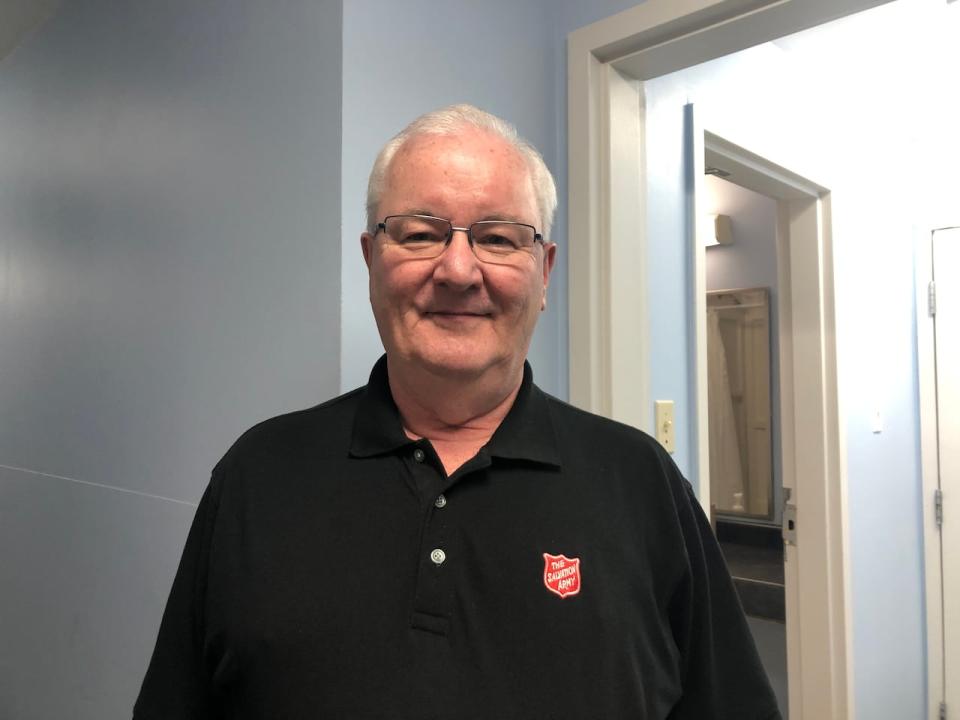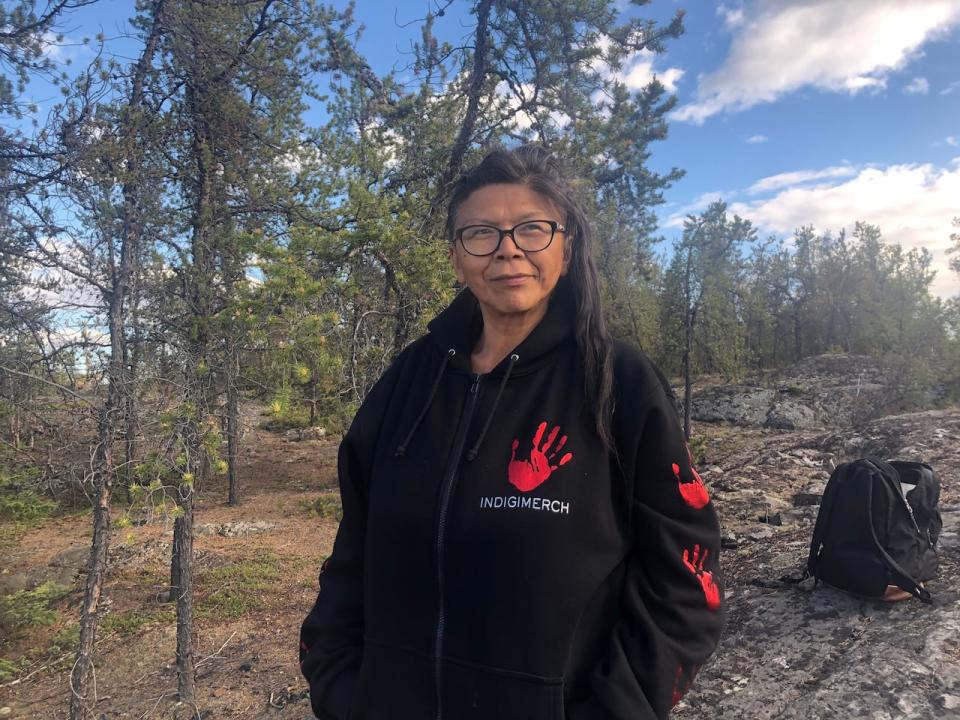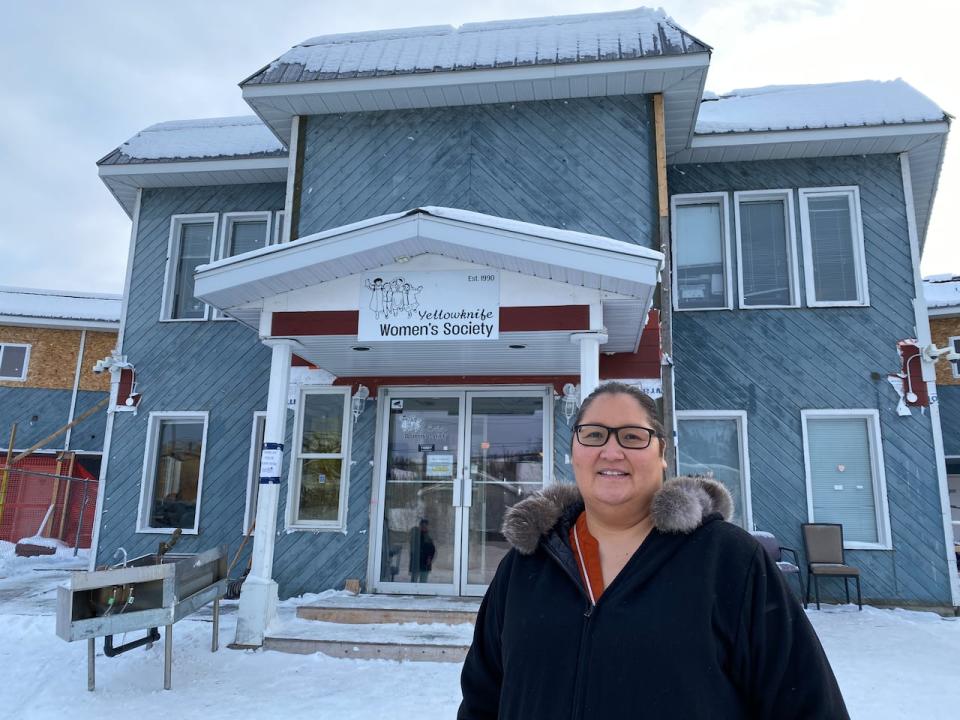'Dignity is lost': Yellowknife shelters struggle with overcrowding, violence
Yellowknife shelter operators say they are in "crisis" after struggling for months to meet the needs of a growing population of unhoused people.
At the Yellowknife Salvation Army men's shelter, people have been sleeping in the narrow hallways for months, executive director Tony Brushett said.
The shelter is set up with space for a maximum of 31 people, he explained, but over the past several months the shelter has been taking in an average of over 50 people each night.
The shelter recently capped the number at 45 people each night because of concerns about fire safety, but it's still extremely crowded.
"Dignity is lost," Brushett said of the overcrowded conditions.
Brushett said that the number of people accessing the shelter really began to go up when people returned to the city after last summer's wildfire evacuation.
"It seemed like there were new individuals that came up from down south," he said.
Brushett also said that many people who used the shelter before the evacuation are now using it more.

The women's emergency shelter in Yellowknife has seen the same trend, according to Yellowknife Women's Society director Renee Sanderson.
That shelter is meant to accommodate up to 10 people, she said. But since last year's evacuation it's been sheltering more, clearing room in the small kitchen for people to sleep. In the winter, some people were forced to sleep in chairs.
Violence, safety concerns, staff burnout
Both Brushett and Sanderson say the crowded conditions have led to more violence at the shelters.
"A lot of the folks who've been staying here, some for as much as eight, nine years, they're now feeling like they're afraid," Brushett said. "They still have no choice but to come here, but they'll hide away in a corner."
Support that used to be provided by shelter staff, including connecting people to addictions services or other housing supports, has essentially stopped, Brushett said, as staff dedicate all their efforts to keeping the peace.
He also said that overcrowding makes it harder for staff to do health checks on shelter users who are at risk of overdose.
Sanderson said overcrowding is also affecting shelter staff.
"I've heard from different staff that they just don't feel safe being in there," she said.
Brushett estimated that if all shelters in town stopped taking people in when they reached capacity, there would be an extra 50 people living on the street.
The push for a tent encampment
Some people in Yellowknife are pushing for another solution to homelessness: a tent encampment.
Earlier this month, a group led by Tłı̨chǫ teacher and homelessness activist Georgina Franki, along with Summit Roofing owner Dingeman van Bochove built a wooden tent platform in a secluded area just off 48th street. It was built on commissioner's land, without permits.

The group hoped the platform would act both as the foundation of a winterized wall tent, and as a way to draw attention to the city's housing crisis.
Franki said she would ultimately like to see the N.W.T. government provide land for a tent encampment in the city.
"I believe this is a solution, even if it's a short-term solution, and I think it's better than what they have right now," she said.
Franki told CBC she has received an email from a territorial lands officer telling her that she was required to get permits for the platform, but expressing support and offering help with the documentation.

"They're willing to work with us, which is beautiful," Franki said.
Franki told CBC she and other group members were planning to ask MLAs and non-profits for their support with the application.
More shelter beds needed
Brushett said that while sleeping outside could work well for some unhoused people, it shouldn't be the only choice for people.
"They should have somewhere, an option, to go," he said.
"I think short term we need to come up with another shelter, one that I think one that will better suit the folks who ... have severe mental health issues and/or severe addictions issues."

And in the long term, he believes the city needs a new permanent shelter, "a 24-hour a day, seven-day-a-week shelter with wrap-around services," where staff could support shelter users in trying to find a permanent home.
Sanderson said that if nothing changes, she thinks more people will end up sleeping outside. She said she has ideas for how a tent encampment could be made more safe.
But ultimately, she said that what Yellowknife truly needs is more housing, including supportive housing for people getting out of the shelter system.

 Yahoo News
Yahoo News 
